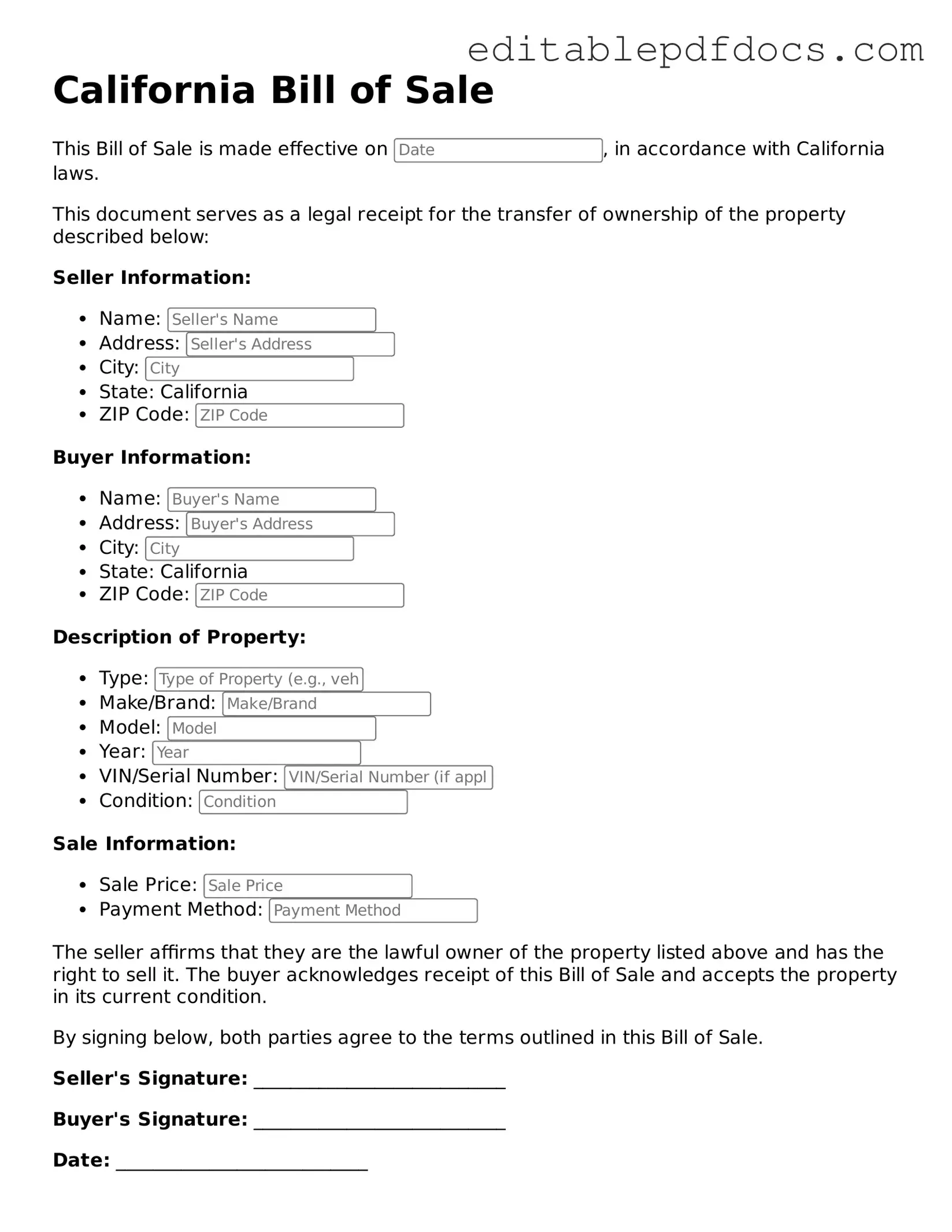Bill of Sale Document for California
A California Bill of Sale form is a legal document that records the transfer of ownership of personal property from one person to another. This form serves as proof of the transaction and outlines essential details such as the item description, purchase price, and the parties involved. To ensure a smooth transfer, it's important to fill out this form accurately.
Ready to complete your Bill of Sale? Click the button below to get started.
Open Editor Now
